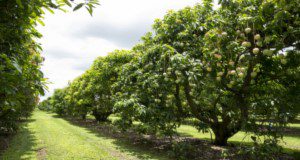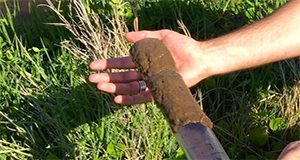Planning is the key to successful grove establishment, maintenance, and production. Developing a detailed infrastructure description and plan, cultural program, and financial and marketing plan for a new or existing grove with a new fruit crop will save you time and money and help minimize mistakes. Prospective growers should compile and analyze information needed to select a grove site, establish the needed infrastructure, and develop maintenance plans for the plants and how the production will be marketed. This new 15-page publication of the UF/IFAS Horticultural Sciences Department presents an outline of the type of information growers need when establishing a tropical fruit grove or contemplating management or modification of an existing grove. Written by Jonathan Crane, Yuncong Li, Edward Evans, Fredy Ballen, and Jeff Wasielewski.
https://edis.ifas.ufl.edu/hs1387
Tag: Water Management
A Beginner's Guide to Water Management—Muck: Causes and Corrective Actions
Muck is both the popular and the scientific term for the material found on the bottom of ponds and lakes. Its “oozy” feel and rotten egg smell can be offensive, and it provides habitat for problem insects like blind midges. It may seem simple: get rid of the muck; get rid of the problems. However, there is more to this muck-raking story. Excessive amounts of muck in the wrong places certainly can cause problems, but just enough muck in the right places is essential for a healthy lake that supports diverse wildlife and fishing. Learn all about muck and what to do about it in this 13-page fact sheet written by Mark V. Hoyer, Daniel E. Canfield Jr. and Mark Brenner and published by the School of Forest Resources and Conservation Program in Fisheries and Aquatic Sciences.
edis.ifas.ufl.edu/fa200
FOR232/FR294 Wildland-Urban Interface Case Study: Land Conservation along the Suwannee River
FOR232, a 4-page illustrated fact sheet by Lauren McDonell and Martha C. Monroe, discusses how the Suwannee River Water Management District successfully used conservation easements to restrict development, protect natural resources, and improve ecology around the Suwannee. Includes references. Published by the UF School of Forest Resources and Conservation, February 2010.
http://edis.ifas.ufl.edu/fr294
FOR 181/FR246 Forest Management in the Interface: Water Management
FOR-181, a 6-page fact sheet by Susan W. Vince and Martha C. Monroe, describes the role of forests in the water cycle and the hydrological effects of land development, and introduces four strategies for lessening the negative hydrological effects of urbanization: protecting forests, reducing impervious surface cover, controlling sources of pollutants, and managing stormwater runoff. Includes references. Published by the UF School of Forest Resources and Conservation, July 2008.
http://edis.ifas.ufl.edu/FR246

